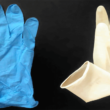Difference Between Caterpillar And Centipede
Caterpillar
A caterpillar is an elongate, wormlike larva of an insect, particularly of butterflies and moths. Typically long and slender, a caterpillar’s body has three regions: head, thorax, and abdomen. The mandibles, or jaws, are effective in chewing plant materials. The thorax bears three pairs of short legs. The abdomen usually bears a pair of fleshy prolegs on each of the third to sixth segments and on the tenth, or last, segment. Caterpillars of small moths rarely exceed 5 mm (0.2 in) in length; those of the largest may measure up to 155 mm (6 in). They are often brightly colored and patterned and many have hairs or spines, which are sometimes poisonous. Caterpillars are essentially the nutritive and growth stage of the insects’ life span. Ecologically, they are enormously important, transforming large amounts of plant matter into animal matter and wastes, as well as serving as food for other animals. Many caterpillars, however, such as those of the gypsy moth, are destructive to crops and shade trees.
Centipede
Centipede, any of a large class of arthropods found throughout all warm and temperate regions of the world. Commonly known as hundred-legger, the centipede is recognized by its long, flattened body with many segments and a pair of walking legs on each typical segment.
Structure
The centipede has a distinct head, which has a pair of sensory antennae, a pair of toothed chewing jaws (mandibles), and two pairs of accessory jaws (maxillas), which handle food and hold it to the mouth. Eyes are usually not present, but when they do occur, they usually are no more than a small clump of simple eyes (ocelli). The eyes of the house centipede and its relatives, which are active in the daytime, are faceted and resemble the compound eyes of insects.
The upper and lower surfaces of the centipede’s trunk segments are armored with thickened plates and joined by a flexible membrane. In each typical trunk segment, these membranes are perforated by a pair of openings called spiracles. They supply air to the tubes of the respiratory system. The first trunk segment has a pair of curved hollow pincers, or poison claws, that have sharp perforated tips. A paralyzing poison is injected through them into captured prey. Although one genus of centipedes reaches a length of 1 foot (30 cm), most are only 1 to 2 inches (2.5–5 cm) long.



